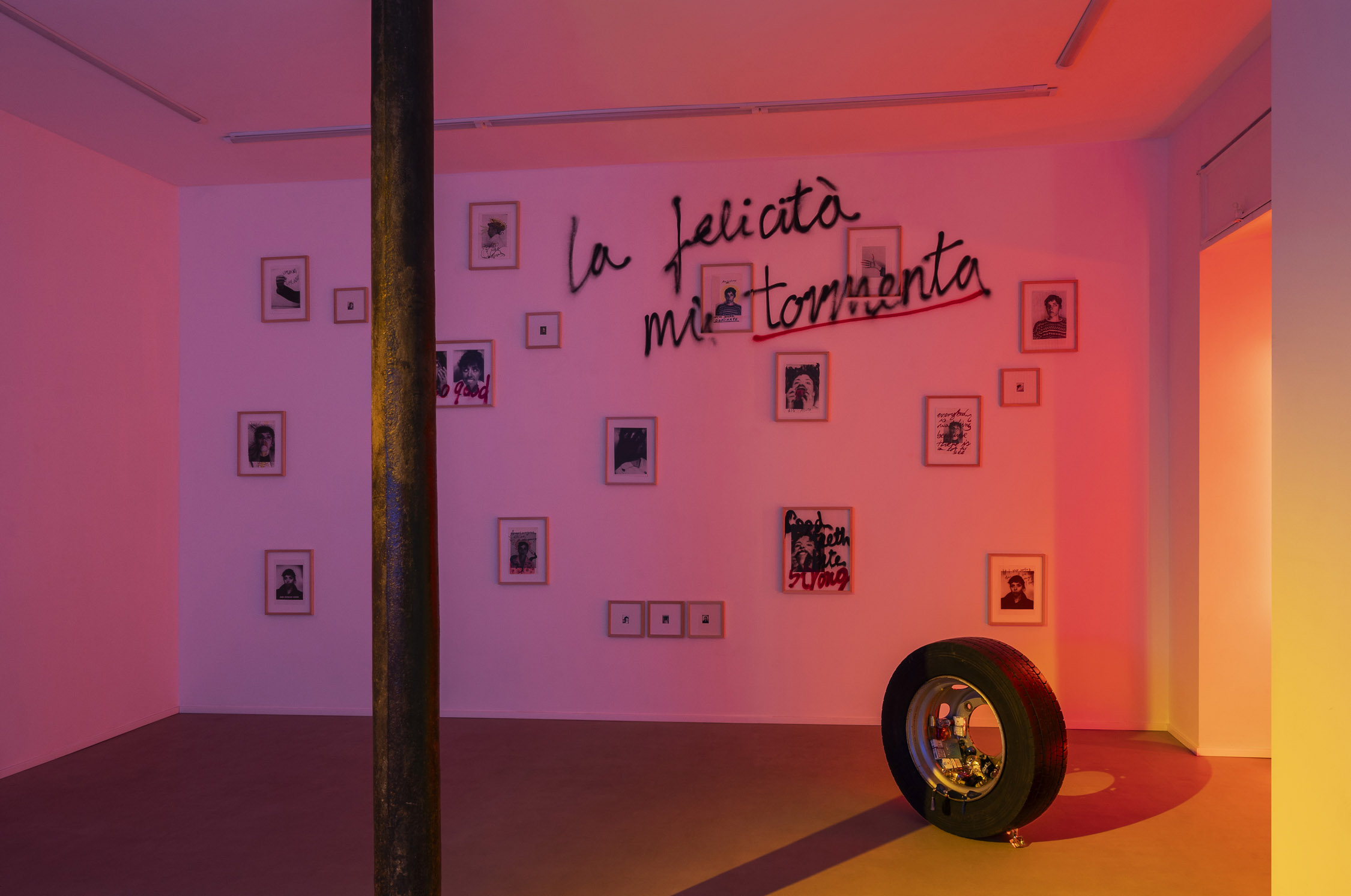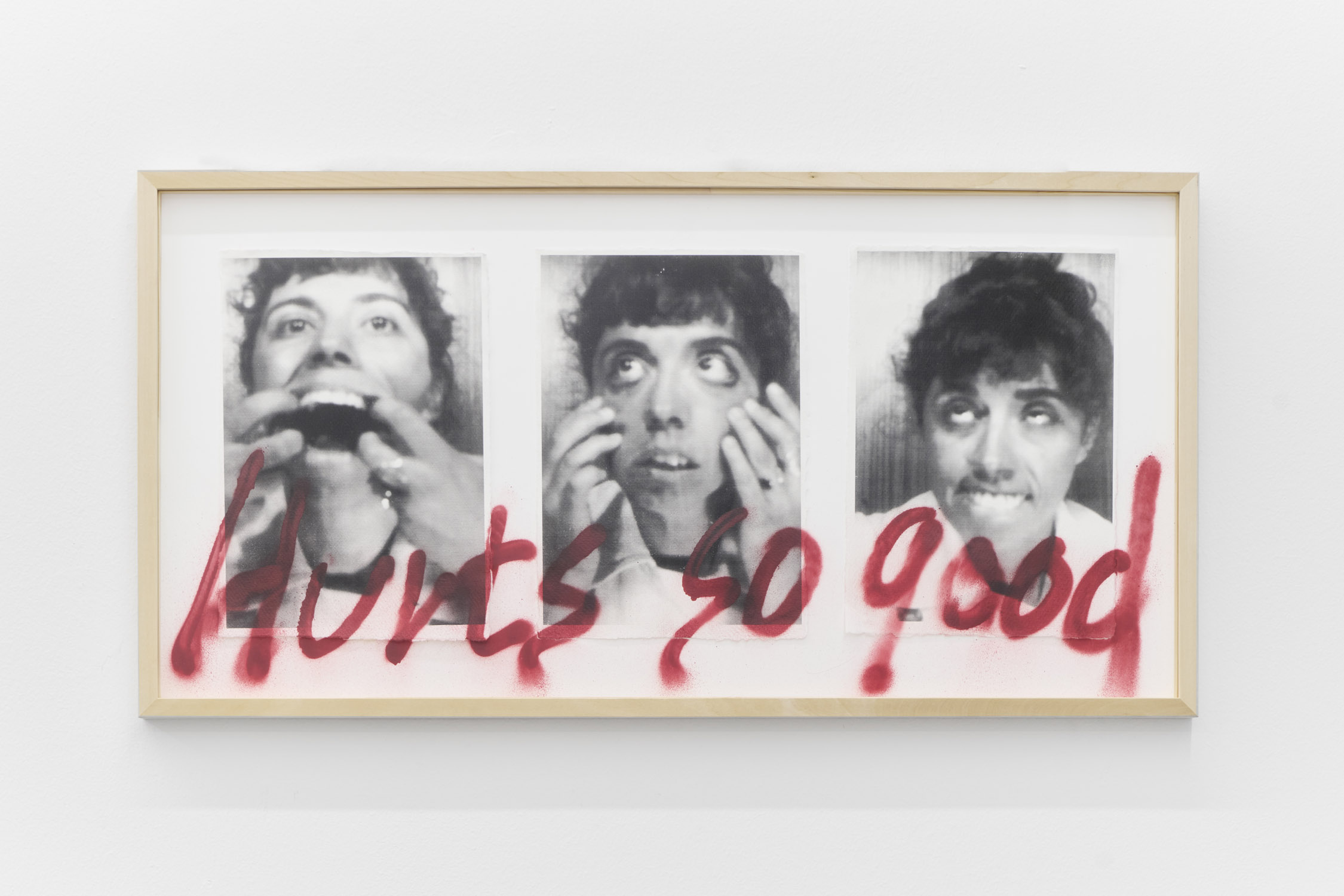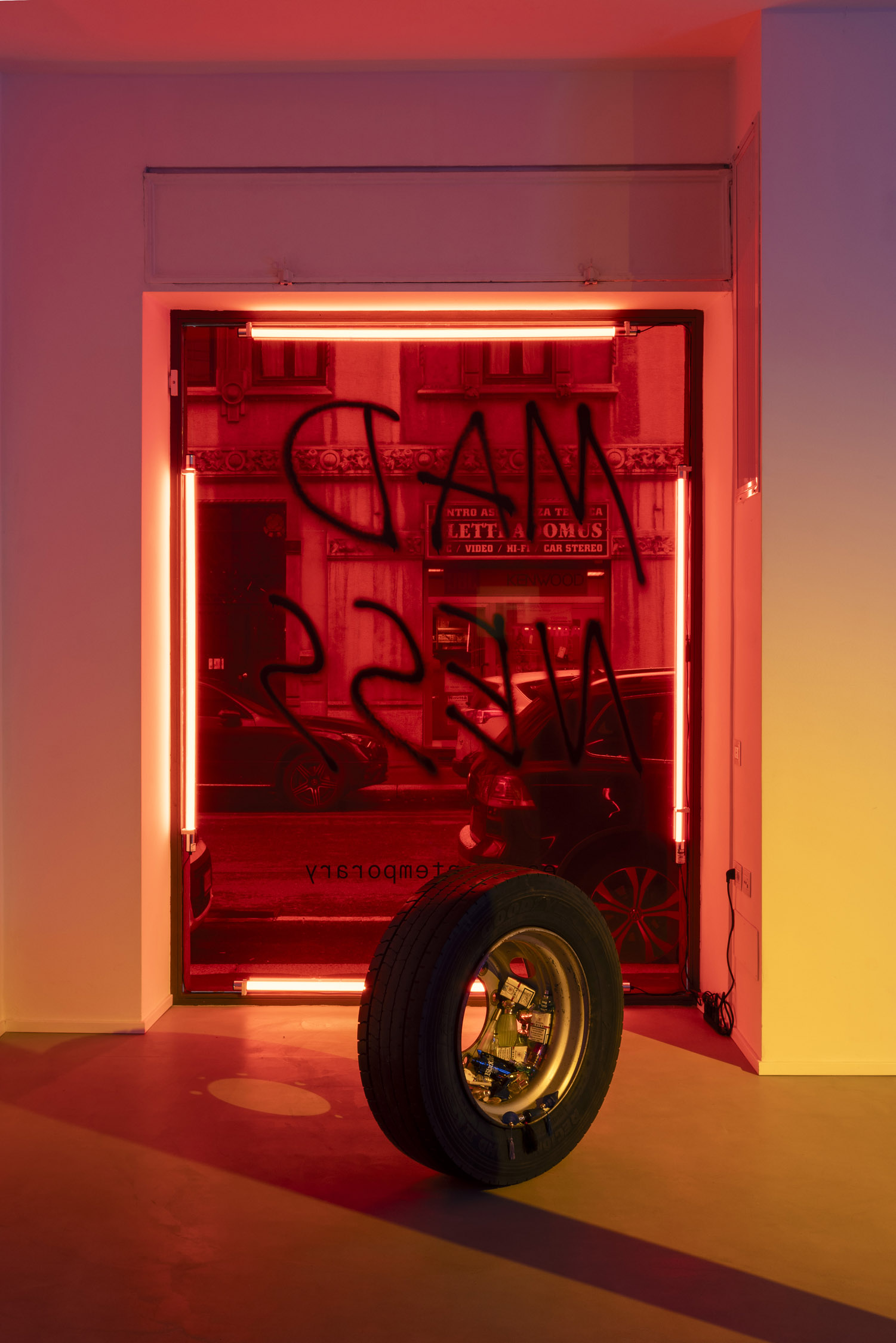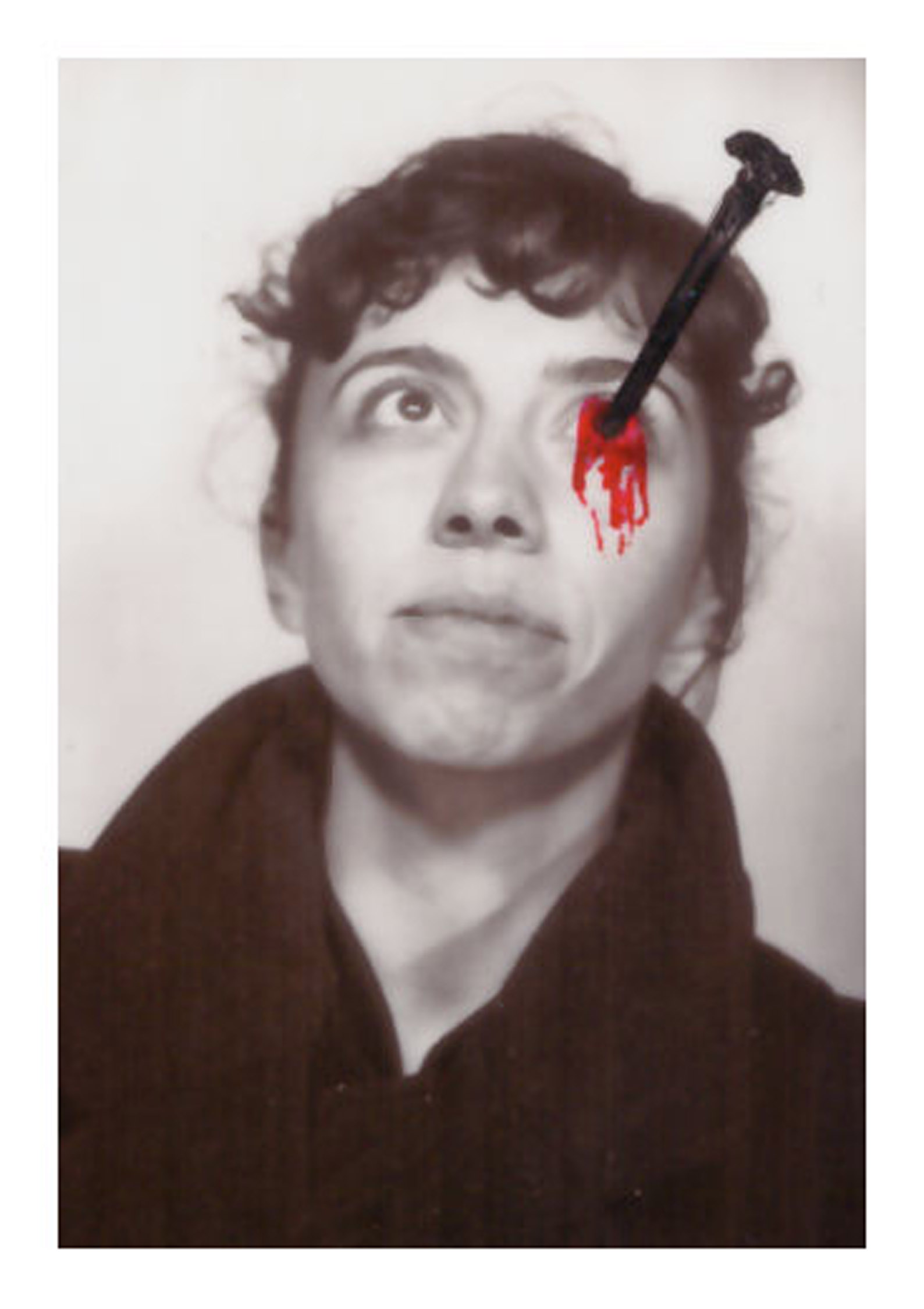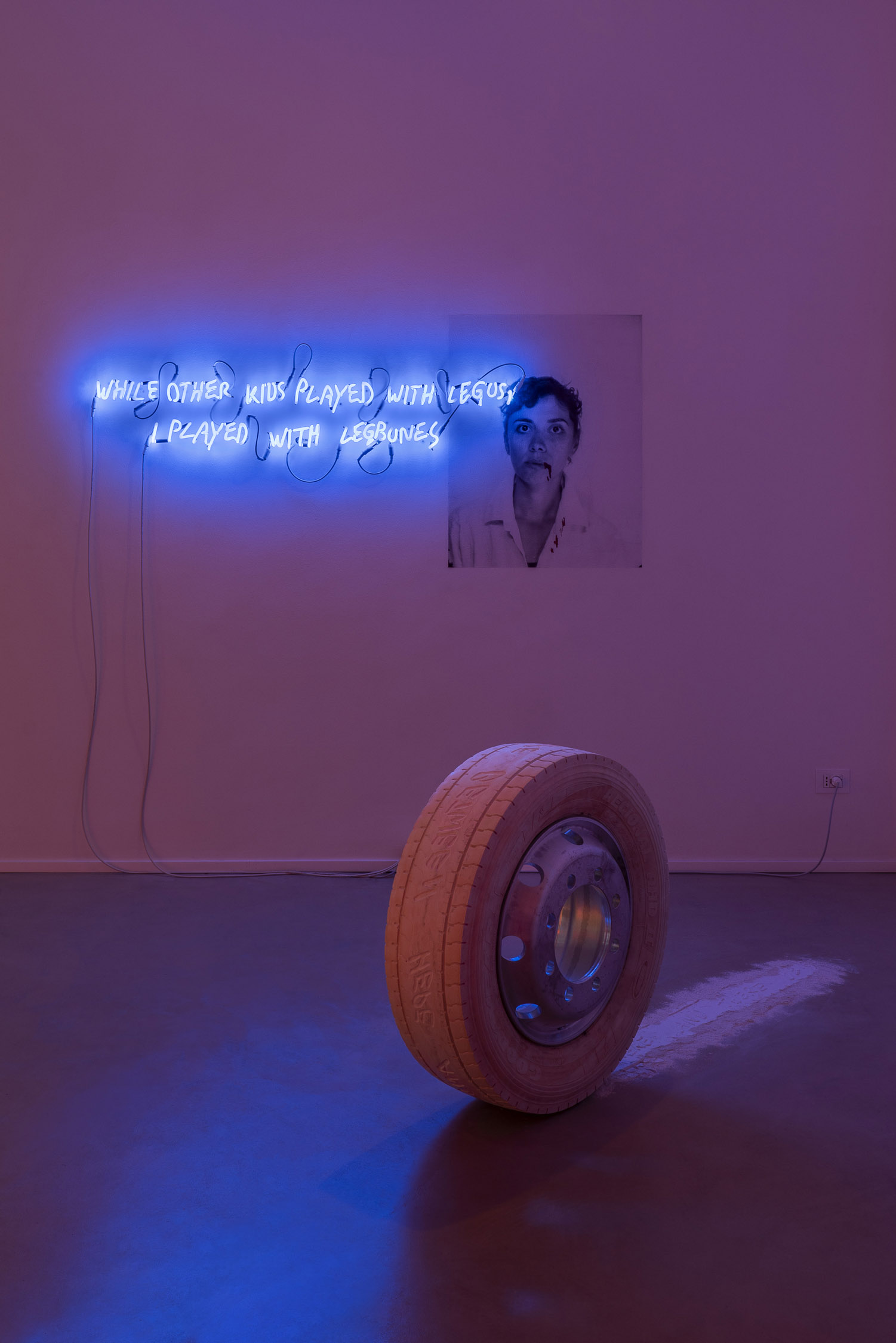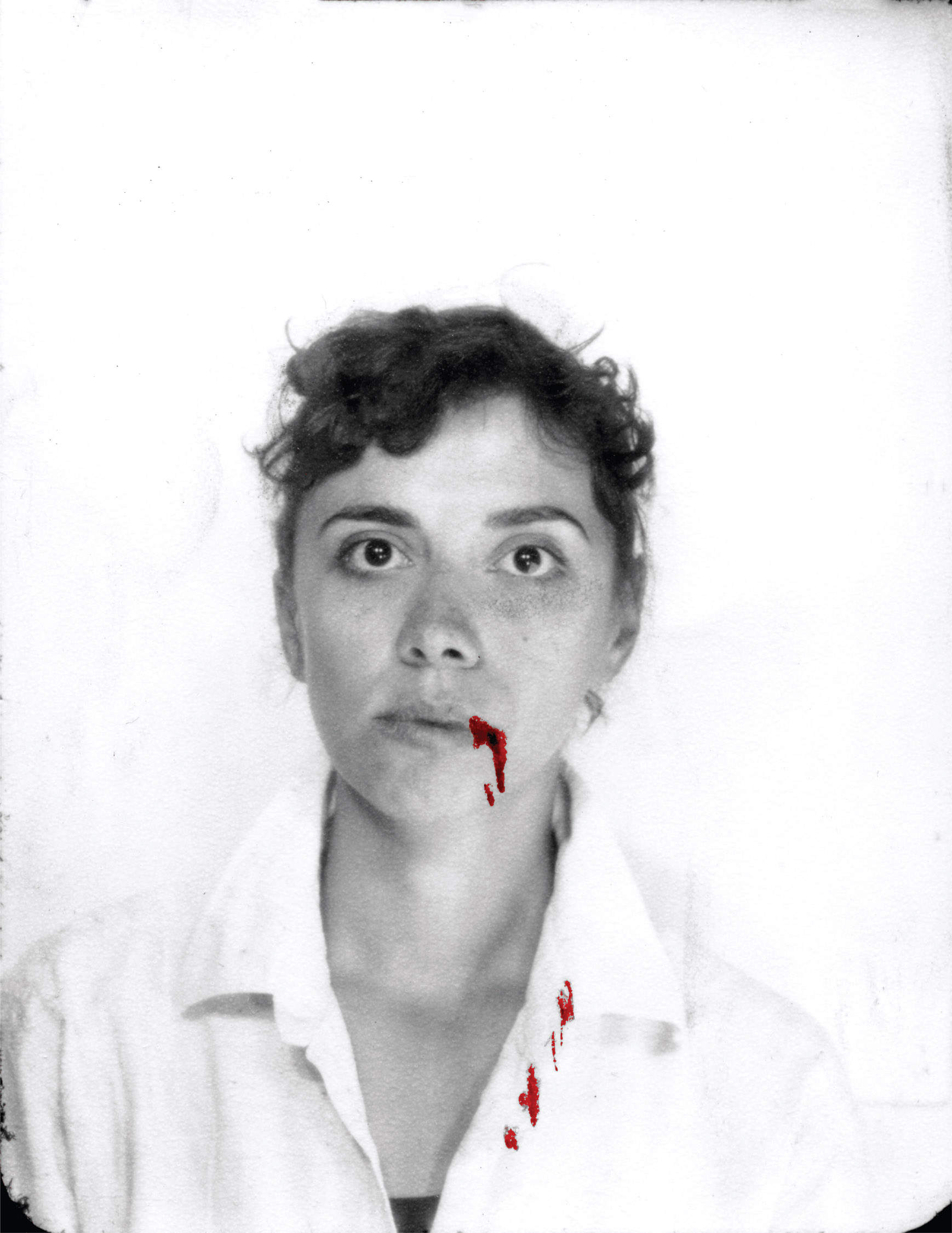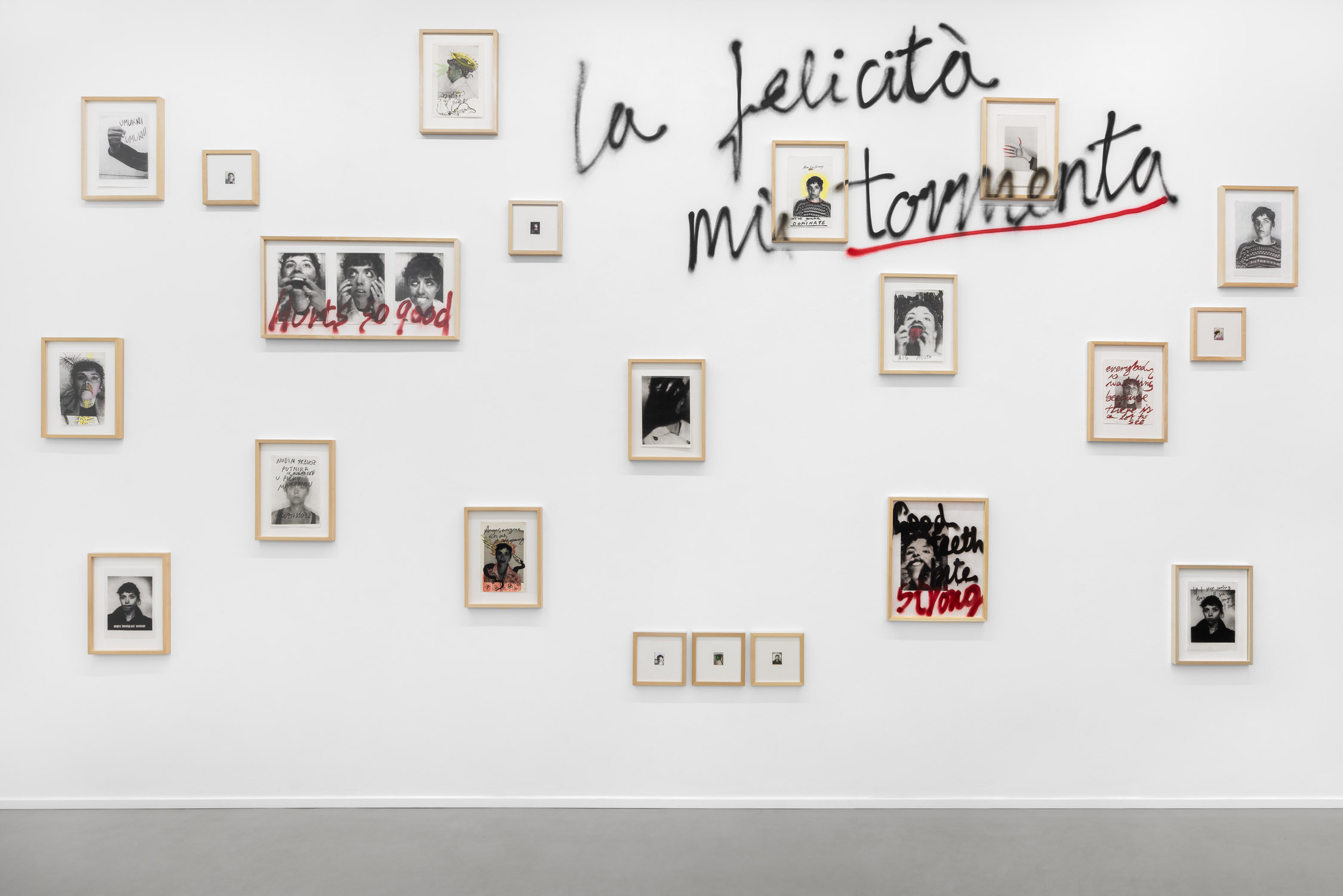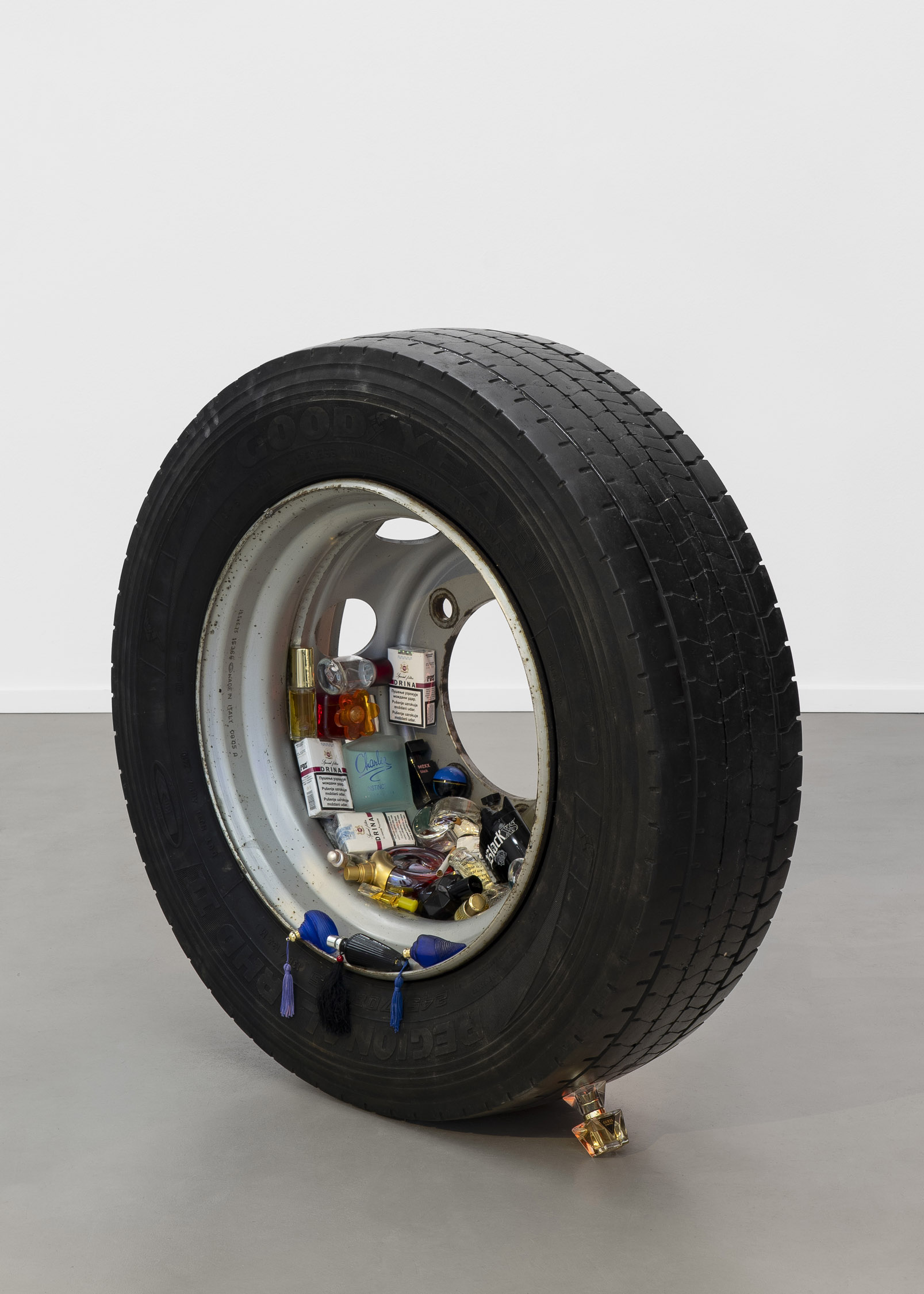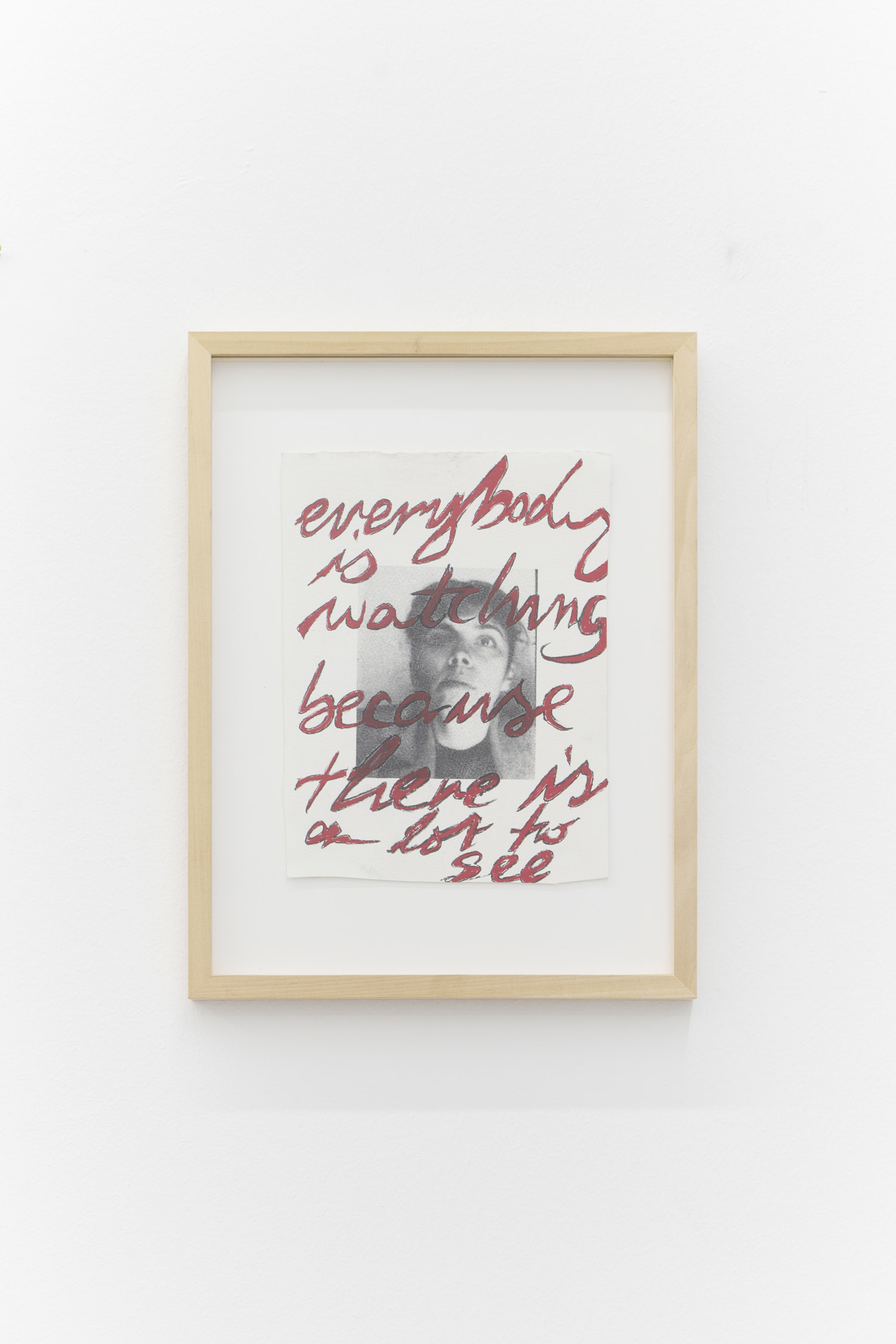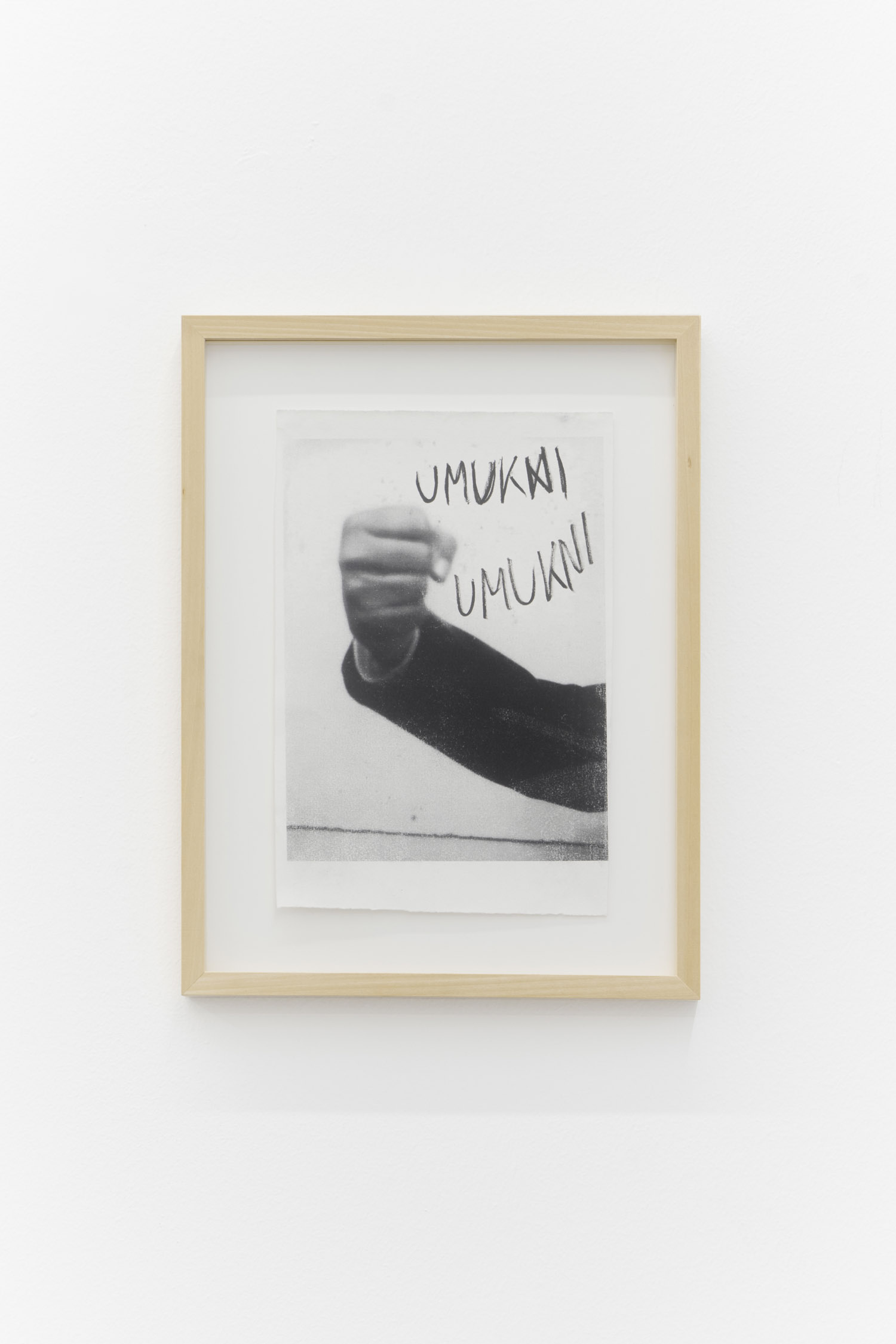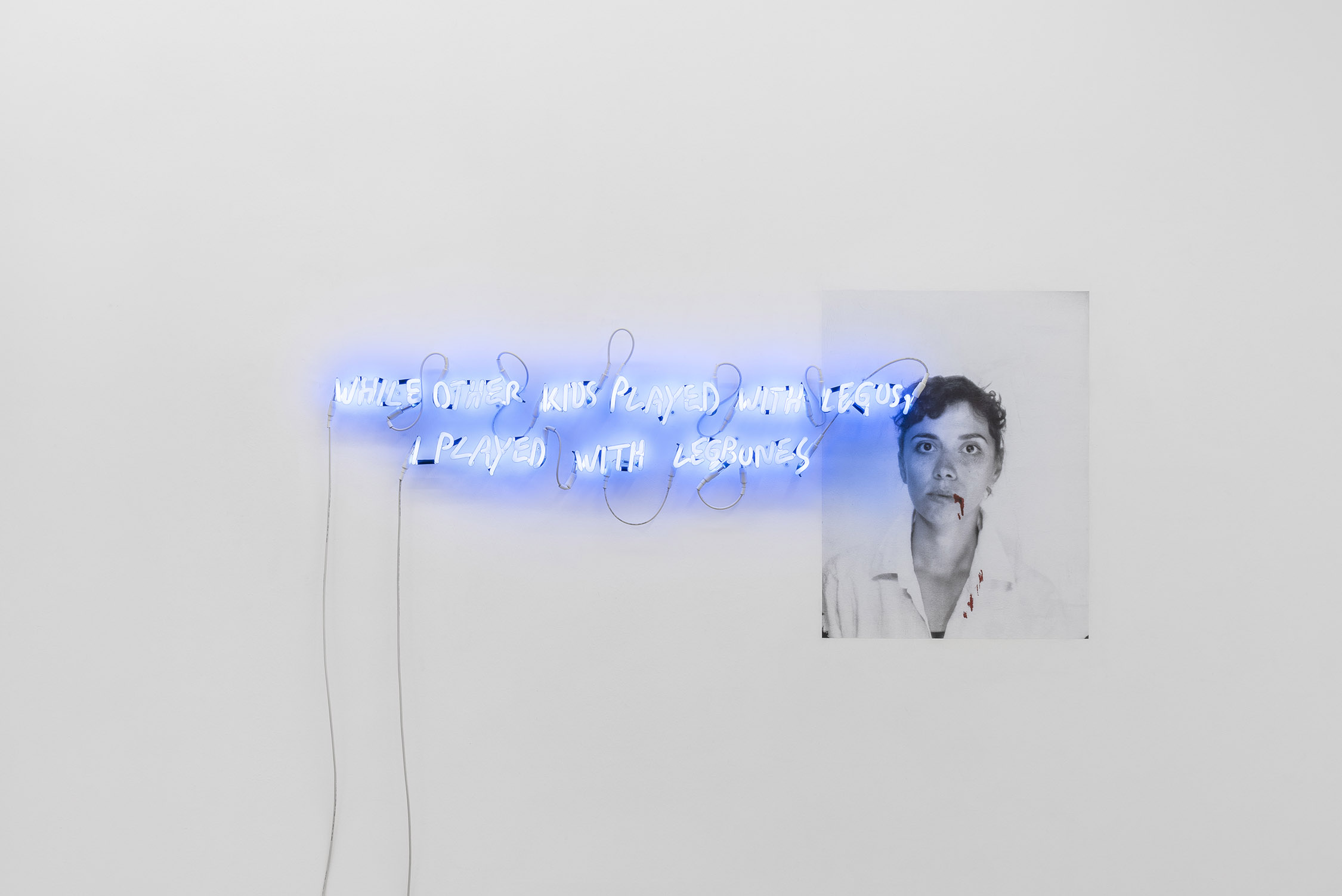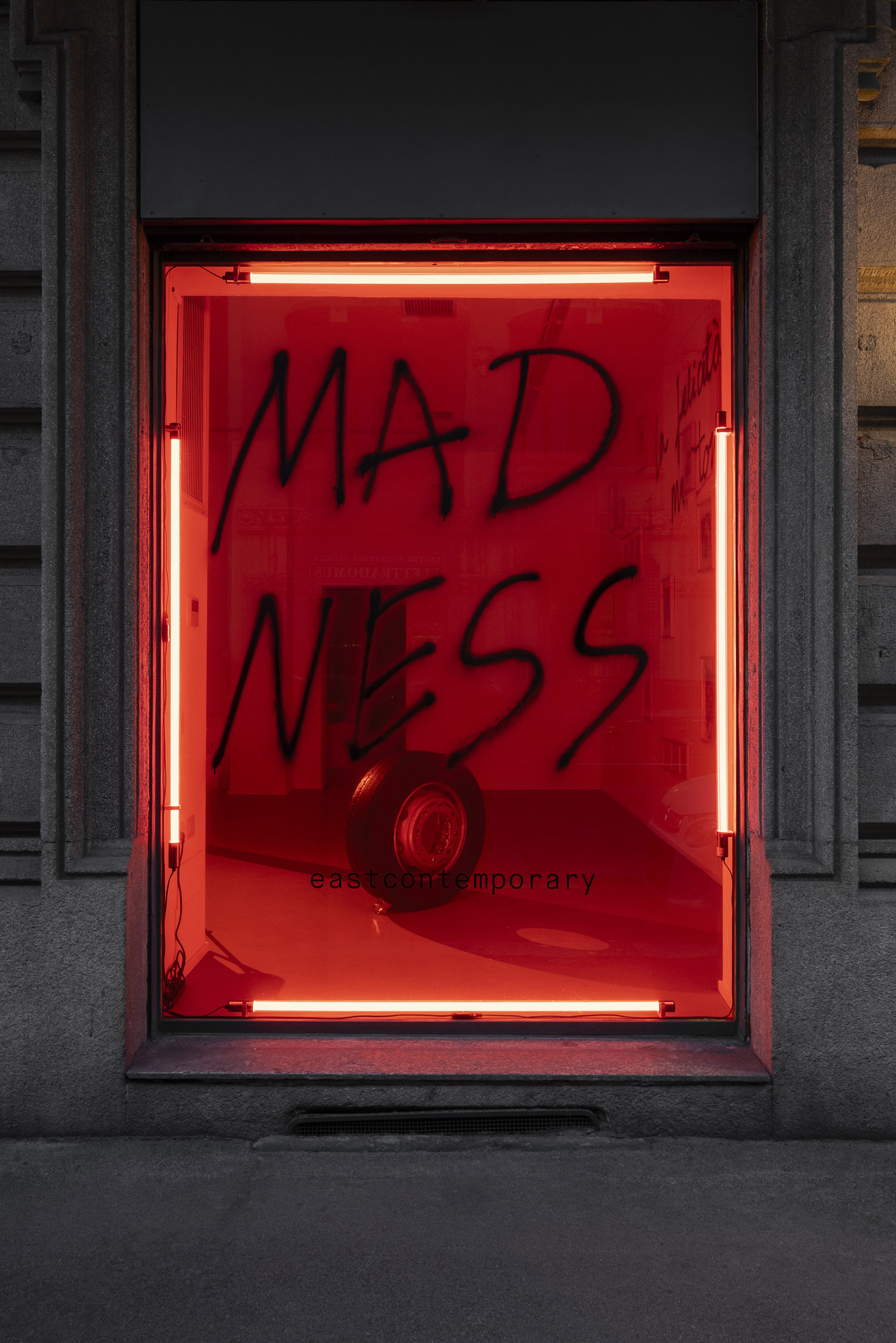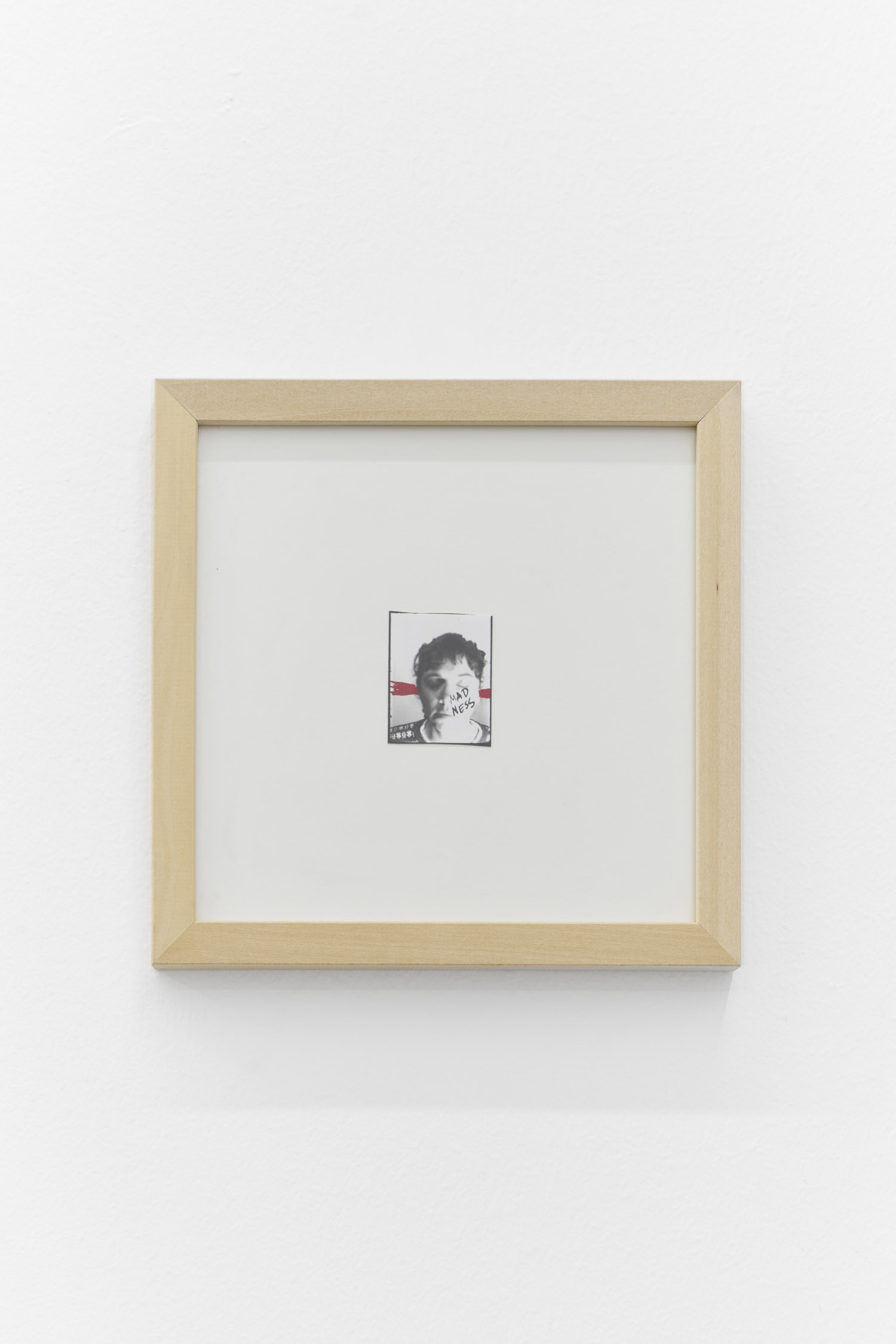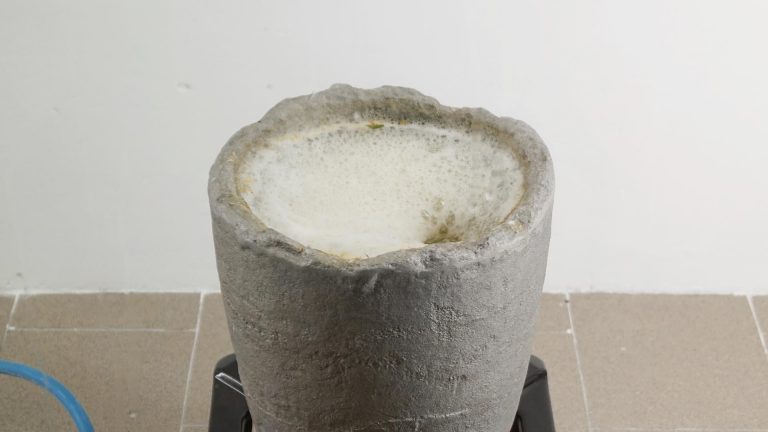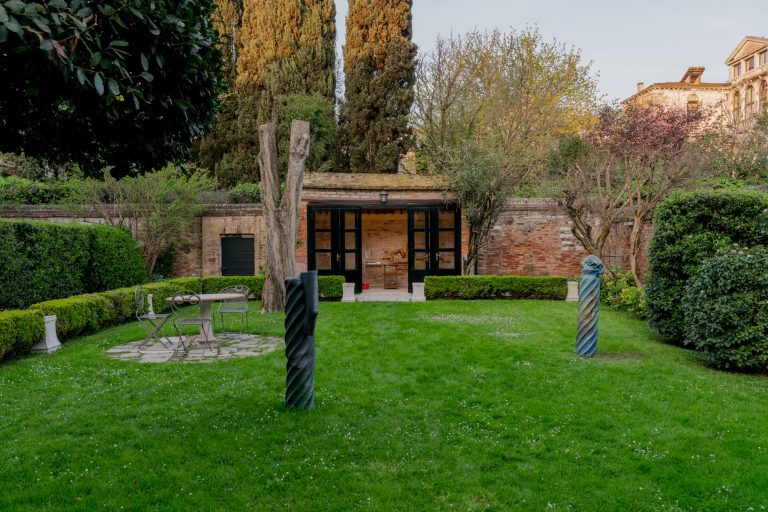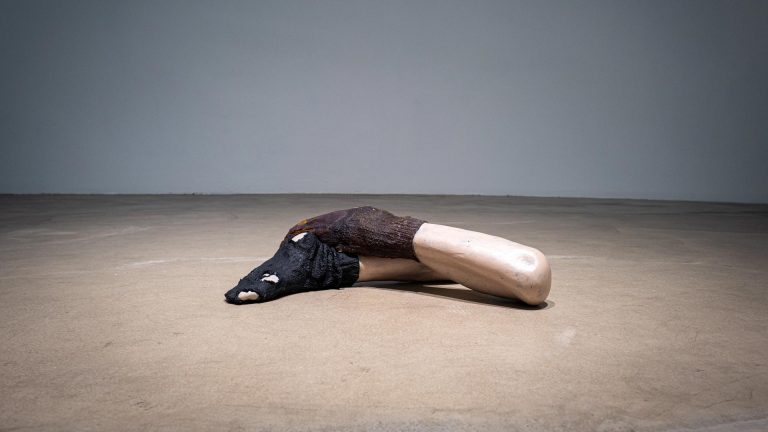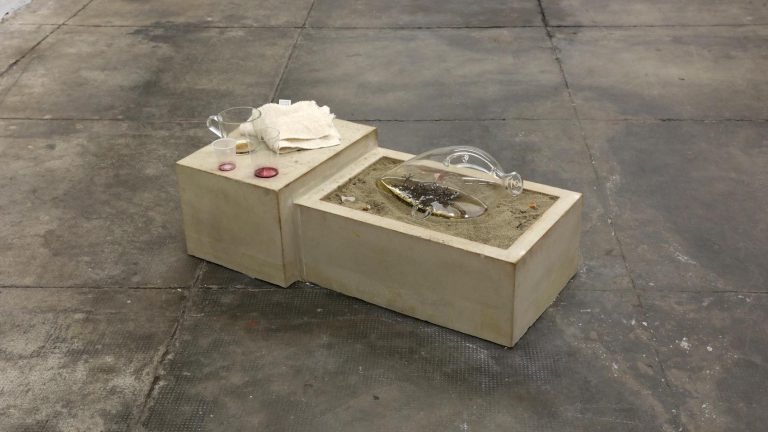Artist: Mila Panić
Exhibition title: Madness
Venue: eastcontemporary, Milan, Italy
Date: March 7 – April 19, 2024
Photography: Tiziano Ercoli, Riccardo Giancola / all images copyright and courtesy of the artists and eastcontemporary, Milan
Madness, by the Bosnian artist Mila Panić, is a show that, through several different media, scratches at itches that can never be satisfied. Here we see a mixture of the grotesque and the confessional; the absurd and the deadly serious; a feeling of safety and familiarity in drawing, snapped by a sudden rabbit-punch of very dark humour. And, in the presentation of stand-up comedy in the context of the gallery space – Mila’s live performance Hurts So Good – the artist bridges the world of fine art and comedy in a way that has rarely been attempted before.
The humour inherent in the absurdities of life between countries, the discomfort of officialdom and paperwork wrapped in the comfort blanket of diasporic convention, have long been themes in Mila’s work, looking back to video pieces such as Tante aus Deutschland (2019). Yet since the covid pandemic this humorous sourdough has risen over the baking tray of public attention in very unexpected ways. Mila’s stand-up practice began at the end of 2021 and has been developing assuredly and confidently since.
There are of course easy parallels to draw between stand up and fine art, particularly in the realm of performativity. Like stand up, performance is uncompromising, very hard on the performer and sometimes audience. It is a kind of intimate if half understood transitory relationship between artist and those attending. Yet, here the parallels between the two spheres of activity break down. If we drew a Venn diagram to illustrate the audiences for performance art and stand-up there would be little if any point of cross over. Fine Art, in its clean white spaces, where one is ushered in by soft-shoed attendants, is meant to be received in silence and, with rare exceptions, does not invite laughter or a joking response.
Stand up of course is very different. People tend to attend in groups and are more relaxed than the average gallery audience, less afraid of upsetting the arcane, unwritten, middle-class politesse of the art world. People are ready to laugh and to give absolute control of their attention and visual imagination to the performer. Walking out onto the stage is a moment of dizzying power but also vulnerability for the stand up. An artist may feel vulnerable or unhappy at an opening, perhaps with work on display that they are not totally satisfied with; a stand-up routine concentrates these emotions intensely. The rewards of success- rolling laughter- are enormous and immediate, just as is the baffled and disappointed silence of the audience that doesn’t find the routine amusing; the performer has to smile through their own vulnerability to disapproval, and to try to and create an alternative reality by winning the audience over.
Mila’s work on her stand-up routine in the past two years has been relentless, building up her profile in Berlin, often performing seven to ten times per week, then trying out her developing act whilst on residency in New York. There is a mania associated with relentless performing, a superabundant spending of energy that will be familiar to artists only through the feelings 24-48 hours before a show or performance opens. The pace of a stand-up’s life leads to a rapidity of thought, a move to improvisation, a relentless series of experiments- jokes- tried one after another.
The parallel between the performance and the art work on display in Madness is dark and surreal humour. There is a strong streak of surreal humour in Bosnia-Herzegovina, perhaps exemplified most by the absurdist radio show turned TV programme Top Lista Nadrealista (Top of the Surrealist Charts) that ran from 1979-91, in the last years of Yugoslavia. This was a show associated with prophetic political humour, but also featured lengthy ad-libbing and humour building through story telling. There is a strong bass line of such humour in Mila’s drawings, in the comedic “revelation” of interior monologues, biographical detail or self-perceptions : this is typified in the neon piece While Other Kids Played with Legos, I Played with Legbones.
The core of the show is that laughter often derives from and can be a healer of, trauma, and of difficult memories. Mila’s aim also is to make the audience feel comfortable enough to be able to laugh at or with awful things. Her installation Südost Paket is a case in point, deriving from feelings of discomfort at smuggling small luxuries and treats across taxable borders.
This extraordinary installation of bus tyres contains cigarettes, chocolate, coffee, perfume-all hidden away from the eyes of the imaginary customs inspector and causing an excruciating child-like fear of discovery for the smuggler. It’s a piece in the tradition of the readymade, at once absurd and an invitation to empathy and the spinning of new yarns. Once we have got our bearings with the piece, our stomachs begin to knot in fear of discovery along with the imaginary Balkan traveller.
We can see similar dynamics in the drawings on display here. Latent in them is humorous potential, perhaps most notably in If I Stop Smiling They Will See How Angry I Am. The artist makes much use of the blank expression of photo-booth style self-portraits, enabling the writing in of any desired script to comic effect. The effect of these drawings is relational, in that it invites the view to compare Mila’s position with their own and to engage in an ongoing dialogue around different human experiences.
Watching this artist’s further development, with such a diverse body of work, is set to be fascinating. Despite her recent hyper-production in stand-up, Mila’s position remains fundamentally that of a curious and empathetic artist, fascinated by the spectrum of human experience from everyday absurdity, to disaster, to trauma; an artist confident enough to engage in new terrains and to keep on discovering. The artist and the comic who keeps us coming back for more is by definition shape-shifting and unpredictable. Please, keep looking out for Mila – howsoever she next appears- and remember to laugh.
-Jon Blackwood
Mila Panić (b. 1991, Bosnia and Herzegovina) lives and works in Berlin.
Through visual art and stand-up comedy, Mila Panić uses humor to create liberating moments, laugh and engage with issues such as selective empathy, politics, war, displacement or desperate situations. In her practice, stand-up comedy, visual art and writing come from the same place – from a spectrum of irritation, anger and madness, and what lies beneath and drives it all is fear. These elements became the basis for her to reshape the visitor’s perspective on given topics.
Panić is a graduate of the Bauhaus University in Weimar and Academy of Fine Arts in Banja Luka. She just had a solo exhibition at Künstlerhaus Sootbörn in Hamburg (GER), while recent group shows include The Immigrant Artist Biennial 2023 in New York (US), Autostrada Biennale in Pristhina (XK), Voloshyn Gallery in Kiev (UA), 59. October Salon – Belgrade Biennale (SRB), Polo del ‘900 in Turin (IT), U10 Art Space in Belgrade (SRB), National Museum of Bosnia and Herzegovina in Sarajevo (BA), Center for Contemporary Culture in Bihać (BA), Goethe-Institut in Sarajevo (BA) and Museum of Contemporary Art in Skopje (MKD). Her works are part of Imago Mundi – Luciano Benetton Collection, Museum of Contemporary Art of Republic of Srpska and private collections.
Jon Blackwood is an educator and writer based between Aberdeen, Scotland, Sarajevo and Skopje. His work focuses on contemporary art in the post-Yugoslav space. He has curated exhibitions in the UK, Croatia, Bosnia and Macedonia. He is editor, together with Irfan Hošić and Claudia Zini, of the forthcoming book Crisis, Rupture & Discontinuity : Art in Bosnia-Herzegovina since the 1980s, which will be published by Routledge in 2025. Follow Jon on instagram : @jon.blackwood.
